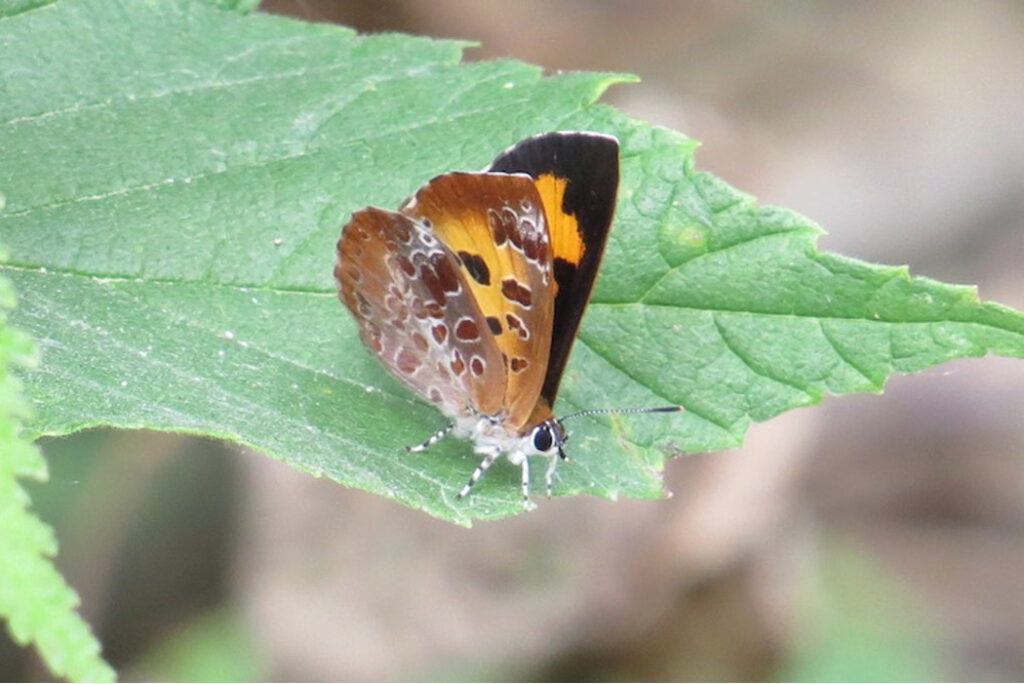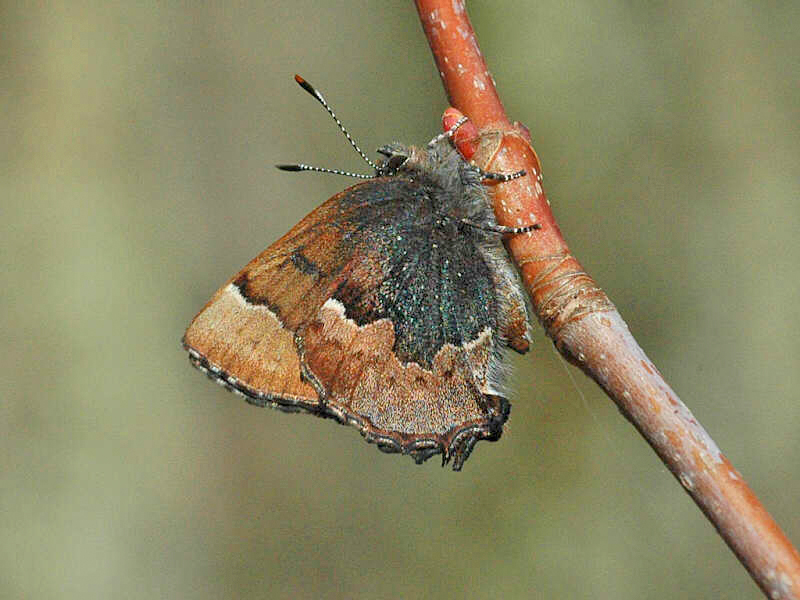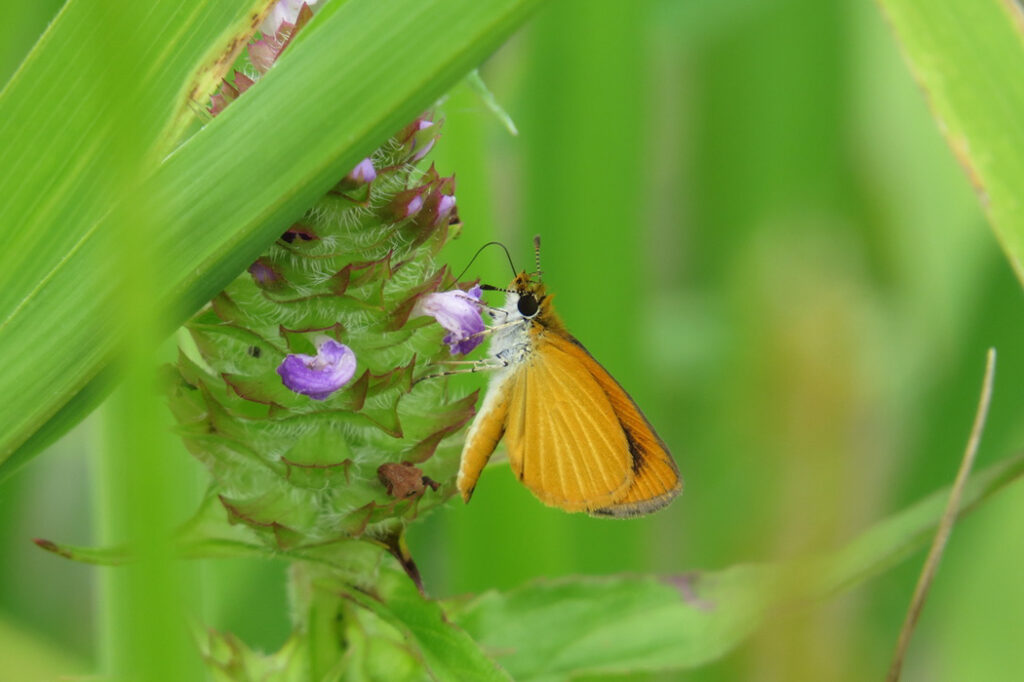
People who know me know how much I love birds. I’ve got a “bird nerd” sticker on my van, I’ve added 582 birds to my “life list,” and I’ve taken vacations for the sole purpose of bird watching. I didn’t know there was anything that could distract me as much as birds.
And then I met butterflies.
I had 30 years as a naturalist behind me when I took part in an Iowa Butterfly Survey Network (IBSN) training. Based at Reiman Gardens in Ames, IBSN promotes butterfly conservation in Iowa by training citizens to do annual butterfly surveys. With my background as a naturalist, I thought I had a relatively good grasp on the butterflies of Iowa. Boy, was I wrong! The 40 most common butterflies were not a problem—it was the remaining 80 that challenged me. We all know a cabbage white, a monarch, or a tiger swallowtail at a glance. But have you seen a harvester butterfly, or a least skipper, or the Henry elfin? Almost every time I went out on a survey, I would see something I’d never seen before. And I found it exciting to know that I had more to learn. I was hooked! So hooked that on a birding adventure with friends the following spring, I actually left them at one point (while they had their binoculars and spotting scope on an eagle) to chase after a clouded sulphur.
As my love for butterflies has deepened, so has my appreciation of the importance of native plants. I’ve always been a proponent of preserving and maintaining habitat, but even more so now. Although adult butterflies often have a variety of nectar sources, the larvae tend to be very species specific.

It you want to find the Henry’s elfin, a small brown butterfly tinged with orange with a scalloped hind wing, you need redbud trees. They never fly too far from the tree. It is the food of its caterpillar.
The larvae of the beautiful but rare black and white zebra swallowtail need pawpaw trees. This understory tree grows wild in southern Iowa but is itself quite rare. With more people planting pawpaws in their yard for its delicious fruit (it produces the largest edible fruit native to North America), this butterfly’s numbers seem to be increasing.

When I am on my survey route in Jefferson County Park, I often find the least skipper in moist, grassy areas along the pond or wetland. The least skipper is a type of grass skipper, and as the name implies, its larvae feed on native grasses. The silver-spotted skipper, on the other hand, is a predominantly woodland species with its larvae feeding on legumes.
And to give you a few more examples: red admiral larvae feed on nettles, meadow fritillary larvae eat violets, American lady consume pussytoes, pearl crescents need asters, and mourning cloaks utilize a variety of trees including willows, birch, cottonwood, and hackberry. Oh, and the harvester butterfly I mentioned earlier. It’s a bit of a weird one—its caterpillar is actually carnivorous and feeds on woolly aphids!
My love for butterflies (and birds) is why I am happy to see prairie restoration and timber stand improvement in some of the parks and native areas around Fairfield. Yes, I know it usually looks ugly in the process, but the health of butterflies (and all native animals, for that matter) depends on the presence of native plants. (You’ll notice not a single caterpillar feeds on the invasive honeysuckle.)
If anything, I hope this article encourages you to get out to take a closer look at the incredible diversity of butterflies we have in Jefferson County. Perhaps you’ll be inspired to take part in an IBSN survey training in the future and become as easily distracted by butterflies as I am.
More info at JeffersonCountyConservation.com.
